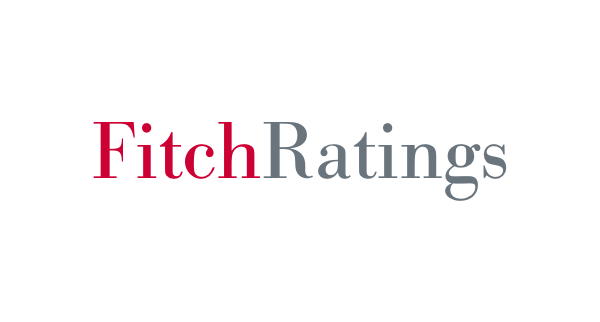Fitch revises China's outlook to negative amid economic uncertainty

By MG News | April 11, 2024 at 02:32 PM GMT+05:00
April 11, 2024 (MLN): Fitch Ratings has revised the Outlook on China's Long-Term Foreign-Currency Issuer Default Rating (IDR) to Negative from Stable, and affirmed the IDR at 'A+'.
Key Rating Drivers
Negative Outlook:
The Outlook revision reflects increasing risks to China's public finance outlook as the country contends with more uncertain economic prospects amid a transition away from property-reliant growth to what the government views as a more sustainable growth model.
Wide fiscal deficits and rising government debt in recent years have eroded fiscal buffers from a ratings perspective.
Fitch believes that fiscal policy is increasingly likely to play an important role in supporting growth in the coming years which could keep debt on a steady upward trend.
Contingent liability risks may also be rising, as lower nominal growth exacerbates challenges to managing high economy-wide leverage.
Ratings Affirmed:
China's 'A+' rating is supported by its large and diversified economy, still solid GDP growth prospects relative to peers, integral role in global goods trade, robust external finances, and reserve currency status of the yuan.
These strengths are balanced against high economy-wide leverage, rising fiscal challenges and per capita income and governance scores below those of 'A' category peers.
Wider Fiscal Deficit:
Fiscal stimulus is being stepped up, as the government seeks to offset economic headwinds. We forecast the general government deficit to rise to 7.1% of GDP in 2024 ('A' median 3%) from 5.8% in 2023, on a Fitch-consolidated basis, which includes infrastructure and other official fiscal activity outside the headline budget.
The 2024 deficit will be the highest since the 8.6% of GDP deficit in 2020. Deficits have been high since 2020, running roughly twice the 3.1% of GDP 2015-2019 average.
Central Government Plays Larger Role:
The central government (CG) will shoulder a greater share of the fiscal burden in 2024, as local and regional government (LRG) finances remain constrained from declines in land-related revenue and high debt burdens.
In 2024, the CG plans a CNY1 trillion (0.8% of GDP) ultra-long bond issuance, on top of a bond issuance of the same size in 2023.
Uncertain Consolidation Path:
Fitch expects deficit reduction to be gradual as it will likely be balanced against economic growth objectives.
There is little clarity on reform measures to support medium-term fiscal consolidation. The revenue base has also eroded, as a result of tax relief measures since 2018 and a weaker outlook for property-related revenue (20%-30% of total LRG revenue).
The CG will likely continue taking on a larger fiscal role to support investment priorities, amid renewed efforts to curtail off-budget spending, particularly if there is an absence of reforms to enhance LRG revenue.
Government Debt Rising Steadily:
Fitch forecasts general government debt (explicit local and central government debt) to rise to 61.3% of GDP in 2024 (54.0% 'A' median) from 56.1% in 2023.
This is a clear deterioration from 38.5% in 2019, when debt was well below the peer median, due primarily to sustained fiscal support to counter economic pressures.
Debt as a share of revenue is forecast to be 234% in 2024, well above the 145% 'A' median.
“We forecast the debt ratio to rise to 64.2% in 2025 and nearly 70% by 2028, higher than our forecast of just under 60% in our previous review,” Fitch added.
The degree to which fiscal support reignites underlying GDP growth is a key uncertainty for our debt path.
Risks from higher government debt are mitigated by a high domestic savings rate, which supports debt affordability and financing flexibility.
Contingent Liabilities:
The agency views fiscal risks as higher than suggested by official government debt metrics, given perceptions that certain government-related entities carry implicit government support.
Non-financial corporate liabilities stood at 167% of GDP at end-3Q23.
Fitch’s baseline does not envision the government engaging in large-scale balance sheet support, but rather incremental support, including through the policy institutions and state banks, to respond to potential financial stability risks to preserve economic and social stability.
Fiscal Risks from LGFVs:
LRGs have been affected by the property slowdown and some Local Government Financing Vehicles (LGFVs) are facing refinancing pressures. In 2023, some highly indebted regions were permitted to issue about CNY1.4 trillion in refinancing bonds to bring LGFV debt directly onto their balance sheets.
Fitch expects such issuance to continue in 2024. Banks have been requested to support LGFV debt structures through restructurings, while local asset management companies have also stepped in with support.
The incremental approach to managing LRG debt challenges from LGFVs means that risks of contingent liability crystallization are likely to remain for some time, potentially creating a gradual, but persistent, drain on fiscal resources.
Large state banks are well positioned to manage a gradual pace of restructurings in the near term, whereas local and regional banks face greater difficulties.
Near-Term Growth Headwinds:
Fitch forecasts GDP growth to moderate to 4.5% in 2024, from 5.2% in 2023, due to persistent property sector weakness and subdued household consumption, resulting from negative wealth effects from the property correction and somewhat sluggish income growth.
These headwinds are partly offset by fiscal stimulus, with external demand turning mildly supportive.
Deflation Remains a Concern:
Deflationary risks have emerged over the past year, amid weak domestic demand dynamics and temporary factors.
The agency does not forecast a prolonged period of deflation, with inflation of 0.7% by end-2024 and 1.3% by end-2025.
Even so, risks are tilted to the downside and inflation could remain lower than we forecast, further weighing on the nominal GDP growth outlook.
Medium-term Growth Prospects:
Fitch forecasts growth to remain around 4.5% through 2028, higher than rating peers supported by large manufacturing and tech sectors, high investment and urbanisation. Sustained investments in technologically advanced industries, in line with government objectives, could boost productivity and enhance growth prospects.
Notable downside risks include uncertainties around the economic transition, demographics, declining productivity, abrupt regulatory policy shifts and geopolitical risks, especially related to trade and investment flows.
Central Role in Global Supply Chains:
China's pivotal role in global trade and manufacturing has provided the economy and external finances a degree of strength and resilience that is uncommon among Fitch-rated sovereigns.
This role has been sustained, despite years of rising trade tensions with the US. Supply chain diversification is gathering pace, but it believes this process will be gradual given China's advanced manufacturing ecosystem, high quality infrastructure and shift into higher value-added industries.
Copyright Mettis Link News
Related News
| Name | Price/Vol | %Chg/NChg |
|---|---|---|
| KSE100 | 129,594.05 193.49M |
1.09% 1394.63 |
| ALLSHR | 80,655.01 541.19M |
1.09% 867.38 |
| KSE30 | 39,657.17 76.34M |
1.41% 552.18 |
| KMI30 | 188,642.21 67.58M |
0.92% 1726.60 |
| KMIALLSHR | 54,581.10 250.26M |
0.70% 379.22 |
| BKTi | 34,491.26 34.81M |
3.03% 1014.58 |
| OGTi | 28,225.76 7.70M |
0.94% 263.18 |
| Symbol | Bid/Ask | High/Low |
|---|
| Name | Last | High/Low | Chg/%Chg |
|---|---|---|---|
| BITCOIN FUTURES | 107,340.00 | 107,475.00 105,440.00 |
1590.00 1.50% |
| BRENT CRUDE | 67.03 | 67.29 66.98 |
-0.08 -0.12% |
| RICHARDS BAY COAL MONTHLY | 97.50 | 97.50 97.50 |
0.70 0.72% |
| ROTTERDAM COAL MONTHLY | 103.80 | 0.00 0.00 |
-3.70 -3.44% |
| USD RBD PALM OLEIN | 998.50 | 998.50 998.50 |
0.00 0.00% |
| CRUDE OIL - WTI | 65.34 | 65.65 65.26 |
-0.11 -0.17% |
| SUGAR #11 WORLD | 15.70 | 16.21 15.55 |
-0.50 -3.09% |
Chart of the Day
Latest News
Top 5 things to watch in this week
Pakistan Stock Movers
| Name | Last | Chg/%Chg |
|---|
| Name | Last | Chg/%Chg |
|---|




 CPI
CPI